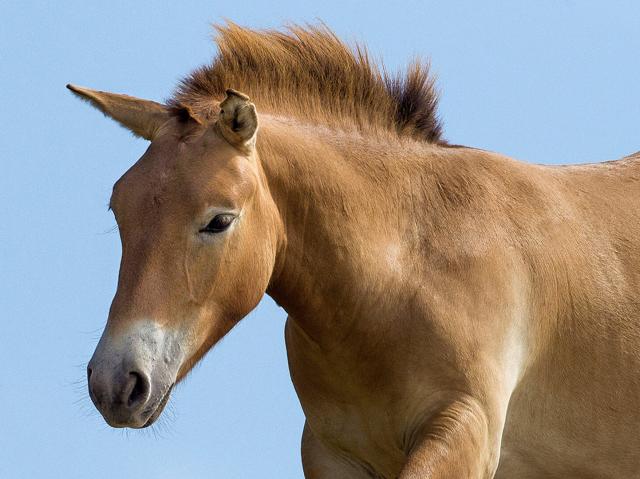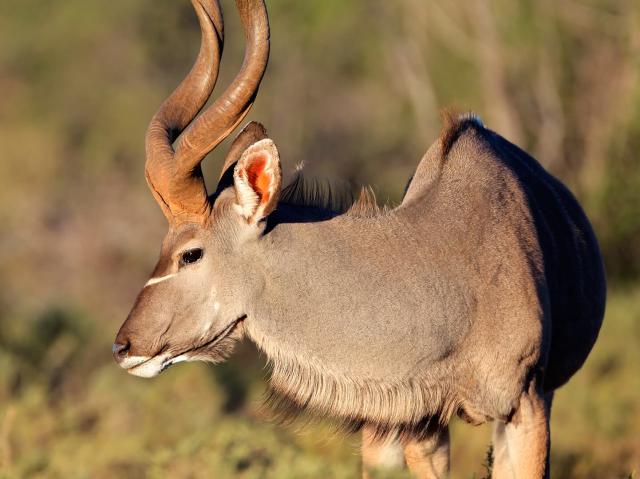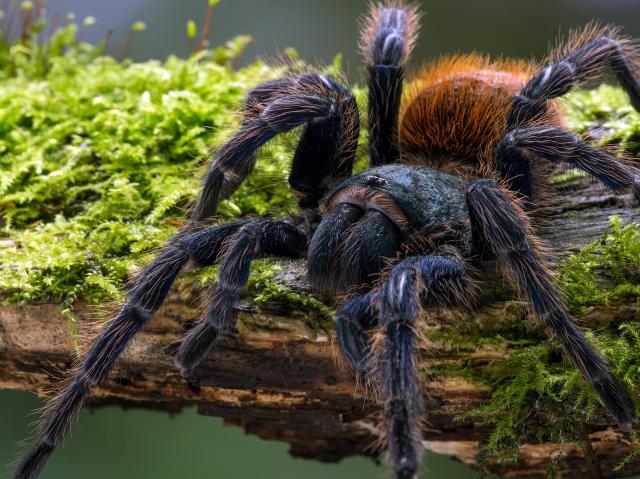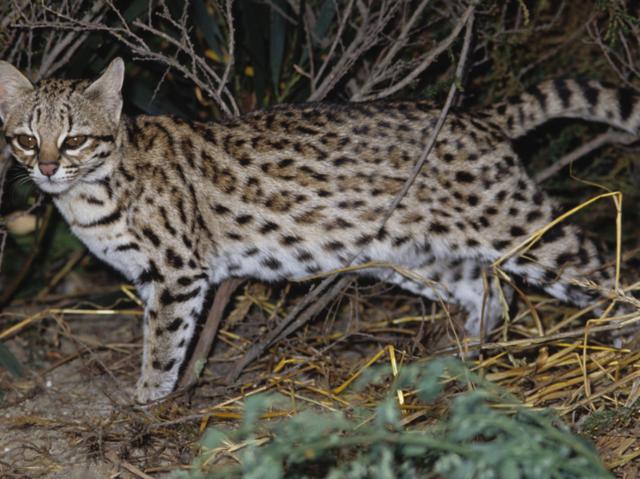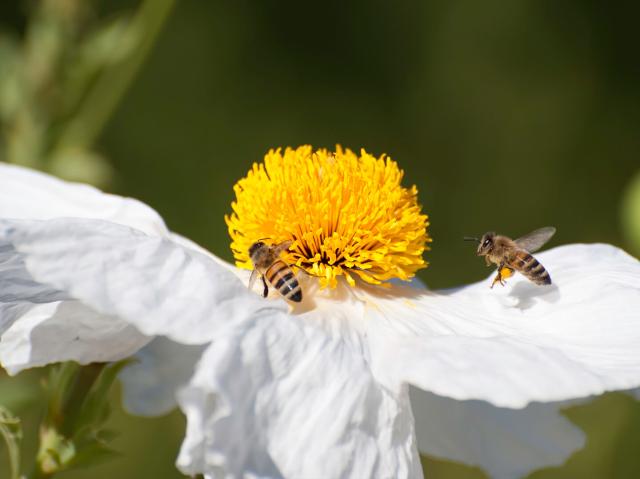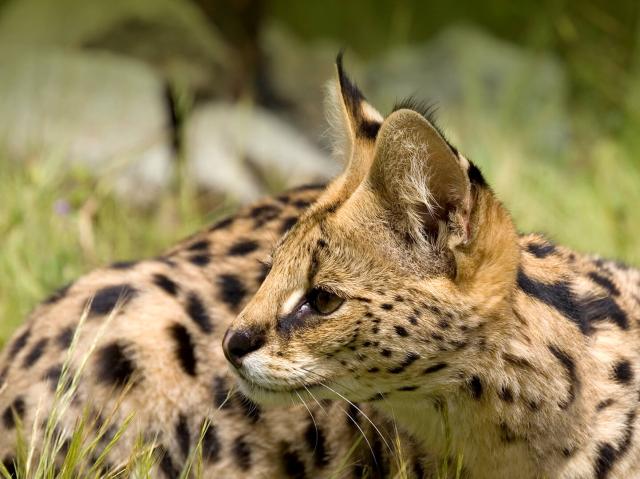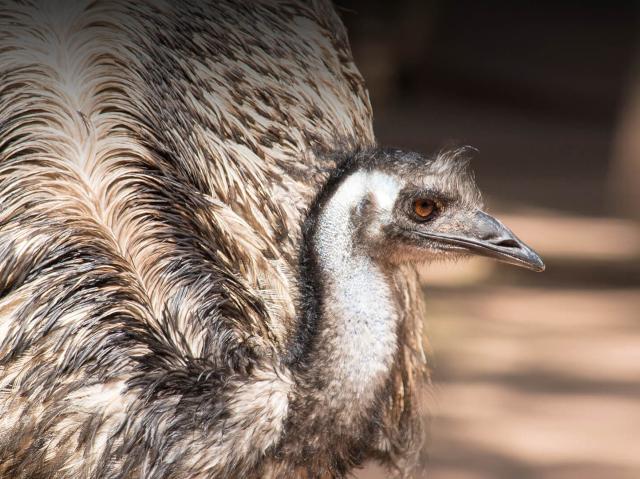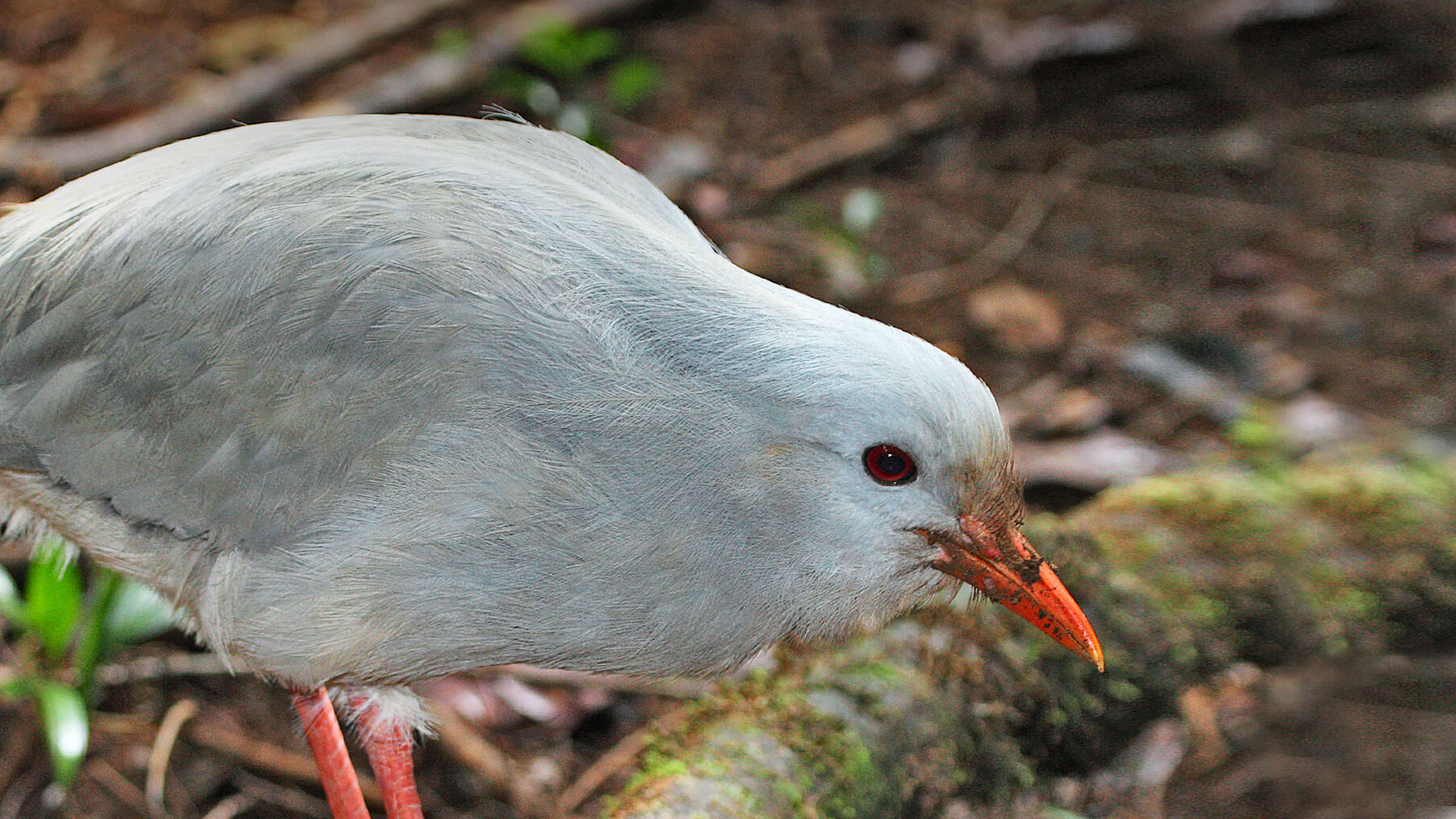
Kagu

- CLASS: Aves (Birds)
- ORDER: Gruiformes
- FAMILY: Rhynochetidae
- GENUS: Rhynochetos
- SPECIES: jubatus

ABOUT
Are you a kagu? With its pearl-gray feathers, bright orange legs and bill, brilliant red eyes, a head crest like a cockatoo’s, and bold stripes on its wingtips, the kagu has a most unusual look for a bird that lives on the ground. This rare, flightless bird is from the forests of New Caledonia’s main island, in the South Pacific. About the size of a chicken, the kagu lives in rain forests as well as drier forests. It has specialized feathers called powder downs; these feathers make a powder that cleans and waterproofs the kagu in its wet habitat. Although it is similar to herons and egrets, the kagu has no known close relatives.
The kagu’s wings may appear large for a bird that doesn’t really fly, but they play an important role. A kagu parent flaps its fully opened wings on the ground, as if injured, to distract a would-be predator away from its chick. When open, the wings have dark stripes that may surprise a potential enemy. The kagu can also run quickly on its rather long legs to escape danger, and it can be quite hard to find in its forest home. The large wings also help the bird keep its balance while climbing and hopping over rocks and other rough spots.
The sounds made by kagus are different for males and females. They may remind you of a rooster crowing and a dog barking at the same time, but the female’s song is shorter and faster than the male’s. Pairs sing a duet in the early morning to warn other birds that this is their turf! A former San Diego Zoo director described the kagu’s morning song as a “screaming challenge”! Duets can last up to 15 minutes. The birds sing year-round, but more often during breeding season. Kagus also hiss and make soft, clucking sounds.
HABITAT AND DIET
At home on the ground: When making their home, kagus choose a place on the ground that is naturally sheltered by rocks, but they can also live under tree roots or in holes in dirt banks. Kagus generally perch on low-hanging branches or tree trunks, but they also use vines, raised roots, or rocks for resting places. They forage for food during the day and preen before sleeping at night.
Large, dark red eyes give the kagu excellent vision. The long bill is strong and pointed, perfect for shallow digging in leaf litter and between rocks in search of its favorite foods: larvae, spiders, centipedes, bugs, cockroaches, millipedes, beetles, snails, worms, and lizards. That brilliant beak helps the bird pull prey out, in pieces if necessary, and this method makes food, such as the not-so-tasty millipede, edible—the bird doesn't have to eat the part that has the yucky substance in it! The kagu is a patient hunter, often standing perfectly still on one foot for long periods of time, watching and listening for prey. Once discovered, the bird strikes quickly to catch the food.
At the San Diego Zoo and San Diego Zoo Safari Park, kagus are offered fruit mix, soaked dog food, a fortified meat-based commercial carnivore diet, mice, worms, and crickets.
FAMILY LIFE
Kagu parents almost always raise just one chick per year. Courtship involves elaborate strutting behavior with a fanned crest and capelike wing movements—they dress to impress! These birds are monogamous, but although they defend their territory together, the male and female may spend much of their time alone.
During the breeding season, they come together to share incubation and nesting duties. The nest can be a mound of leaves on the ground, in which a single egg with light brown splotches is laid. After more than a month-long incubation, the chick hatches with closed eyes and does not move from the nest until three days of age. The young kagu looks different from its parents, with both light and dark brown feathers to camouflage it against the leaf litter of the forest floor. It can start to walk at about three days and may travel several yards away from its hatch site. If the chick hears a parent’s alarm call while out and about, it quickly dives in available cover or stays perfectly still until the danger passes.
The parents continue to provide a leafy “mattress” for their chick until it’s about six weeks old. It continues to sleep on the ground near a parent until 8 to 10 weeks of age, when it joins them on a low perch, such as a fallen tree trunk.
Kagu parents are very patient when teaching their youngster to eat: an adult holds prey in its bill, close to the chick’s head, and calls softly until the baby opens its beak. When the chick is about two weeks old, it starts to demand to be fed! Parents feed their chick until it’s about 14 weeks old. The young bird may stay within its parents’ territory for up to six years, gaining its adult plumage in two to three years, and may help to raise its parents’ next chick.
CONSERVATION
As the national bird of New Caledonia, the kagu's image is used frequently to promote its economy. But its crest feathers—the bird's crowning glory—were so prized by the makers of ladies’ fancy hats in the 1800s that the kagu almost became extinct. Predation by introduced dogs, cats, pigs, and rats brought to the main island also caused kagu numbers to drop. With the bird’s popularity as a pet and even as a food source, and an 80-percent loss of its forest habitat, the kagu soon became endangered.
Fortunately, New Caledonians are working to protect their national symbol, and San Diego Zoo Global is working with the New Caledonia government to create a DNA bank for future studies. Successful reintroductions have been carried out in a national park where predators have been controlled. The mysterious kagu has more secrets yet to be uncovered!
You can help us bring species back from the brink by supporting the San Diego Zoo Global Wildlife Conservancy. Together we can save and protect wildlife around the globe.
LIFE SPAN
20 to 30 years
YOUNG
Number of eggs laid: 1
Incubation period: 35 to 45 days
Weight at hatch: 2.1 to 2.6 ounces (60 to 75 grams)
Age of maturity: 2 to 3 years
SIZE
Length: 22 inches (55 centimeters)
Wingspan: 30.5 inches (77.5 centimeters)
Weight: 1.5 to 2.4 pounds (700 to 1,100 grams)
FUN FACTS
The kagu has skin flaps that cover its nostrils. Called corns, they may keep dirt from entering the nose when the bird digs with its bill.
The kagu is native only to New Caledonia. The native people’s word for kagu is kagou, meaning “ghost of the forest.”
The kagu’s wings are fairly large for a bird that is basically flightless.




